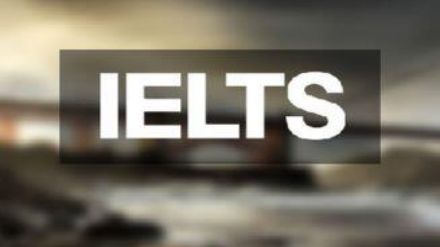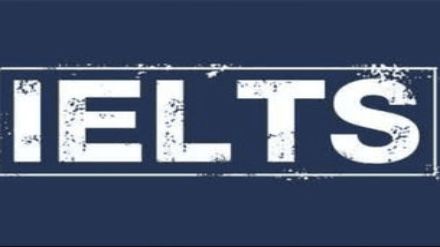备考雅思的同学们需要多多查阅学习资料哦,出国留学网雅思栏目为大家提供2016年雅思考试成绩评分详解,希望对大家有所帮助!
2016年雅思考试成绩评分详解
IELTS scoring in detail
IELTS Academic and General Training versions are marked using the same 9-band scale
Calculating the overall band score
IELTS test takers receive a Test Report Form setting out their overall band score and their scores on each of the four components: Listening, Reading, Writing and Speaking. Each of the component scores is weighted equally.
The overall band score is calculated by taking the average of the total of the four individual component scores.
Overall band scores are reported to the nearest whole or half band.
The following rounding convention applies: if the average across the four skills ends in .25, it is rounded up to the next half band, and if it ends in .75, it is rounded up to the next whole band.
Some examples:
| Listening | Reading | Writing | Speaking | Average score* | Band score | |
|---|---|---|---|---|---|---|
| Test taker A | 6.5 | 6.5 | 5 | 7 | 6.25 | 6.5 |
| Test taker B | 4.0 | 3.5 | 4.0 | 4.0 | 3.875 | 4.0 |
| Test taker C | 6.5 | 6.5 | 5.5 | 6.0 | 6.125 | 6.0 |
*Average score = total of the four individual component scores divided by four.
Calculating the component band scores
| IELTS scoring summary | |||
|---|---|---|---|
| Listening The IELTS Listening test contains 40 questions. Each correct item is awarded one mark. Band scores, ranging from Band 1 to Band 9, are awarded to test takers on the basis of their raw scores. | Reading The IELTS Reading test contains 40 questions. Each correct item is awarded one mark. Band scores, ranging from Band 1 to Band 9, are awarded to test takers on the basis of their raw scores. | Writing Examiners use detailed assessment criteria (known as 'band descriptors') to award a band score for each of the four assessment criteria:
| Speaking Examiners use detailed assessment criteria (known as 'band descriptors') to award a band for each of the four assessment criteria:
|
| Differences between IELTS Academic and General Training: There is no difference. This is because the more socially oriented language skills of listening and speaking are equally important in an academic study or workplace context. | Differences between IELTS Academic and General Training: The Reading component of IELTS Academic and General Training is differentiated* by:
*This is because the distinction between ‘academic’ and ‘general’ literacy has usually been seen as most marked in reading and writing skills. | Differences between IELTS Academic and General Training:
*This is because the distinction between ‘academic’ and ‘general’ literacy has usually been seen as most marked in reading and writing skills. | Differences between IELTS Academic and General Training: There is no difference. This is because the more socially oriented language skills of listening and speaking are equally important in an academic study or workplace context. |
| Band score boundaries Although all IELTS test materials are pretested and standards fixed before being released as live tests, there are inevitably minor differences in the difficulty level across tests. To equate different test versions, the band score boundaries are set so that all test takers' results relate to the same scale of achievement. This means, for example, that the Band 6 boundary may be set at a slightly different raw score across individual test versions. | |||
Scoring: Listening and Reading
IELTS Listening and Reading papers contain 40 items and each correct item is awarded one mark; the maximum raw score a test taker can achieve on a paper is 40. Band scores ranging from Band 1 to Band 9 are awarded to test takers on the basis of their raw scores.
The tables below indicate the mean raw scores achieved by test takers at various levels in each of the Listening, Academic Reading and General Training Reading tests. They provide an indication of the number of marks required to achieve a particular band score.
| Listening | |
|---|---|
| Band score | Raw score out of 40 |
| 5 | 16 |
| 6 | 23 |
| 7 | 30 |
| 8 | 35 |
| Academic Reading | |
|---|---|
| Band score | Raw score out of 40 |
| 5 | 15 |
| 6 | 23 |
| 7 | 30 |
| 8 | 35 |
| General Training Reading | |
|---|---|
| Band score | Raw score out of 40 |
| 4 | 15 |
| 5 | 23 |
| 6 | 30 |
| 7 | 34 |
The Academic and General Training papers are graded to the same scale. The distinction between the two modules is one of genre or discourse type. Academic papers may contain source texts featuring more difficult vocabulary or greater complexity of style. It is usual that, to secure a given band score, a greater number of questions must be answered correctly on a General Training Reading paper.
- See more at: https://www.ielts.org/ielts-for-organisations/ielts-scoring-in-detail#sthash.Paq7qitN.dpuf
点击进入查询入口>>>雅思全球认可学校和机构搜索引擎
雅思考试栏目推荐阅读:


